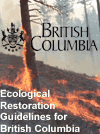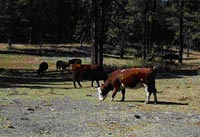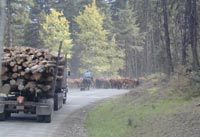 |
|
One of the most significant changes in recent history is the transformed relationship between humans and their environment. Widespread realization that natural systems are precious and limited has begun to change our values towards the world around us. In particular, there is higher awareness about how our behaviour and actions can degrade the health and integrity of sensitive and valuable ecosystems. One response to concern for the environment is to prevent ecological damage in the first place. The other answer is ecological restoration, to repair what damage has occurred.
This
document gives guidance on developing and implementing restoration
projects. These guidelines are designed to inform and guide groups
undertaking restoration programs, regardless of funding source or
type of project. Because every restoration site is different, the
emphasis is on identifying important components common to all restoration
projects, and on providing suggestions for finding resources and
developing project-specific plans. By using these guidelines, your
group will be able to set appropriate and measurable restoration
goals, and develop a restoration plan that will define short- and
long-term activities. Developing these restoration goals and plans
will not only make for a sound project, but will also assist in
obtaining restoration funding. Philosophy of Ecological Restoration While concepts of nature conservation and restoration can be traced back to classical Greece, modern ideas of ecological restoration are built on the writings of Henry David Thoreau, George Perkins Marsh, and Aldo Leopold. The first restoration projects began in Wisconsin in the 1930's, under Leopold's direction (Gayton 2001).
In more recent times, definitions have evolved to describe an ecological approach to restoration. The Society for Ecological Restoration describes ecological restoration as: "the process of assisting the recovery and management of ecological integrity" (SER, 2002), while others describe it as "the art and science of repairing damaged ecosystems to the greatest possible degree of historical authenticity" (Mills, 1995). Key to ecosystem recovery is the restoration of internal processes, as well as ecosystem components (such as rare species, or important habitat features). Implicit in any restoration project is that the cause(s) of ecosystem degradation are identified and controlled (Gayton 2001). Hence, restoration is sometimes as simple as removing degrading agents (e.g., roads, dams, cows, or resource extraction). It may also require long-term efforts, such as reintroducing native species, removing exotic species, or reinstating natural processes including fire and floods. A common concept in restoration is to provide assistance in the context of our incomplete knowledge of how ecosystems function. Given time and removal of degrading agents, natural processes will accomplish most of the work.
|
||||||
 

 
|
|||||||
|
|
|||||||


